Document Windows Management |
  
|
Ways of managing document windows depend on whether document tabs are enabled or disabled.
Managing Document Windows when Document Tabs are enabled
When document tabs are enabled, it is possible to arrange document windows in horizontal or vertical groups. You can have any number of groups at the same time. However, all groups should be either horizontal or vertical.
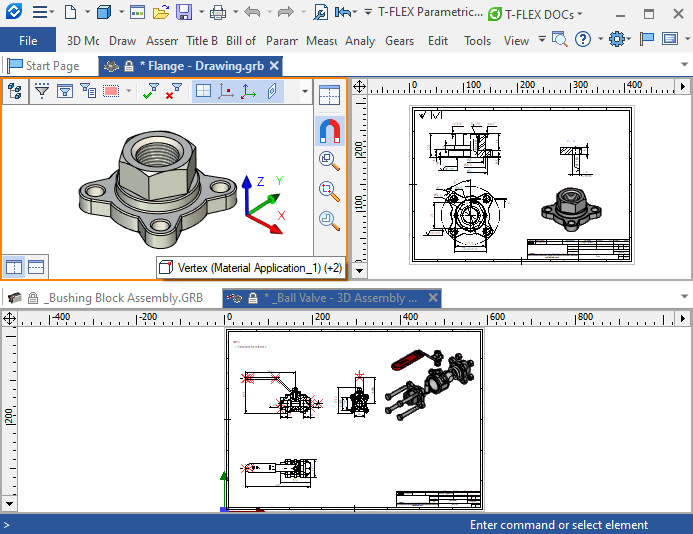
Click and hold ![]() on one of the document tabs, then drag it to the bottom or right border of the document window without releasing
on one of the document tabs, then drag it to the bottom or right border of the document window without releasing ![]() . The preview of the new tabs group borders will appear in the
. The preview of the new tabs group borders will appear in the
form of gray rectangular contour. Release ![]() to confirm new tab group creation. Dragging document tab to the bottom border of the window creates a new horizontal group, to the right border - vertical group.
to confirm new tab group creation. Dragging document tab to the bottom border of the window creates a new horizontal group, to the right border - vertical group.
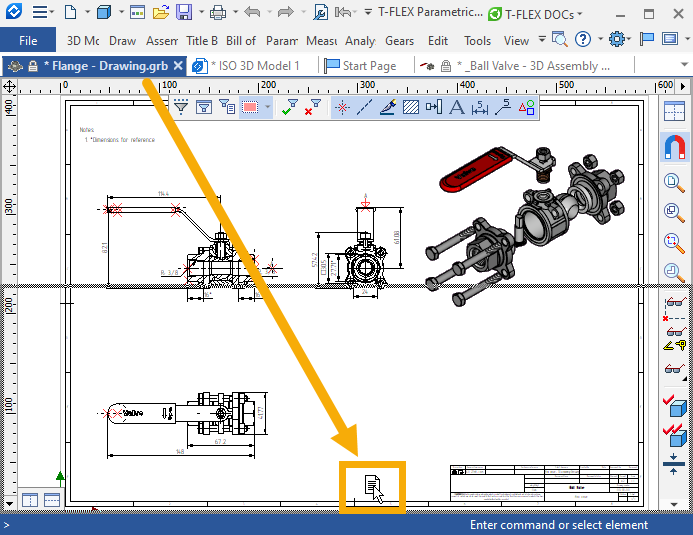
Dragging a document tab to an area not adjacent to the right or the bottom borders of the document window invokes a menu with New Horizontal Tab Group and New Vertical Tab Group commands.

Drag a document tab to an area of other group's tabs in order to transfer this document's window to another group.
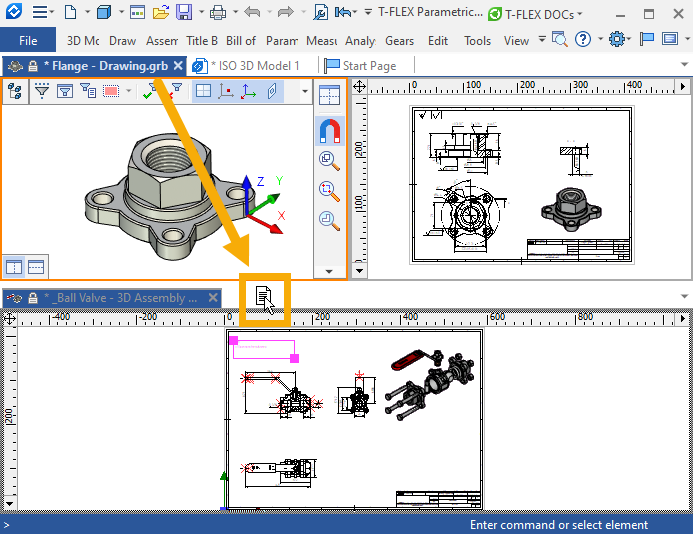
A group can be removed by transferring all its windows into another group.
Aside from methods described above, you can use following commands for creating document tab groups:
Icon |
Ribbon |
|---|---|
|
View > Window > New Horizontal Tab Group |
Keyboard |
Textual Menu |
|
Window > New Horizontal Tab Group |
The command creates a new horizontal group of document windows, if document tabs are enabled. A document window active at the moment of applying the command is transferred to the new group.
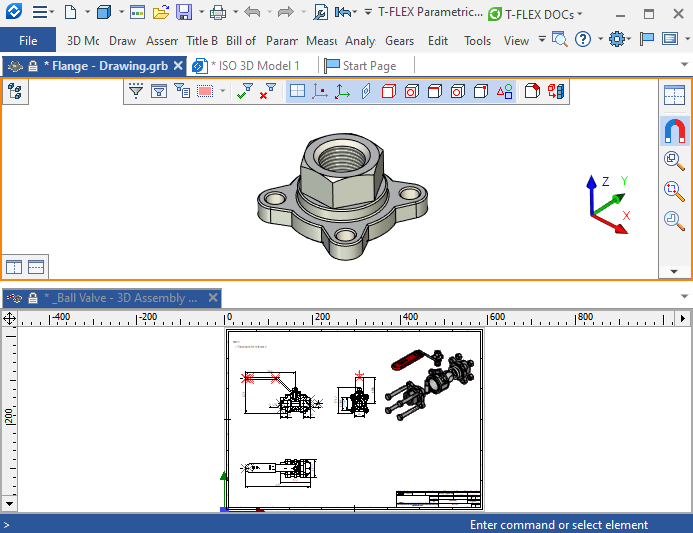
Icon |
Ribbon |
|---|---|
|
View > Window > New Vertical Tab Group |
Keyboard |
Textual Menu |
|
Window > New Vertical Tab Group |
The command creates a new vertical group of document windows, if document tabs are enabled. A document window active at the moment of applying the command is transferred to the new group.
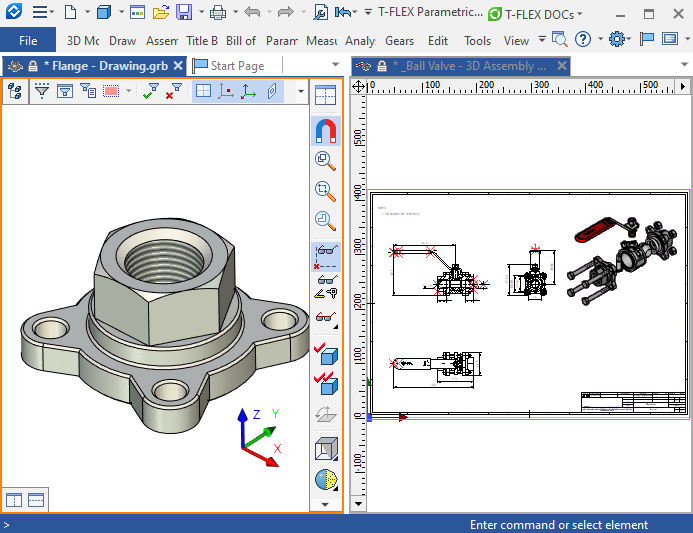
Managing Document Windows when Document Tabs are disabled
When document tabs are disabled, document windows can be maximized, minimized or re-sized to an arbitrary dimensions.
You can use one of the following common ways of windows arrangement:
Icon |
Ribbon |
|---|---|
|
View > Window > Tile Horizontally |
Keyboard |
Textual Menu |
<WHT> |
Window > Tile Horizontally |
The command distributes the screen space between open document windows equally along the vertical axis of the screen, avoiding windows interference.

Icon |
Ribbon |
|---|---|
|
View > Window > Tile Vertically |
Keyboard |
Textual Menu |
<WVT> |
Window > Tile Vertically |
The command distributes the screen space between open document windows equally along the horizontal axis of the screen, avoiding windows interference.
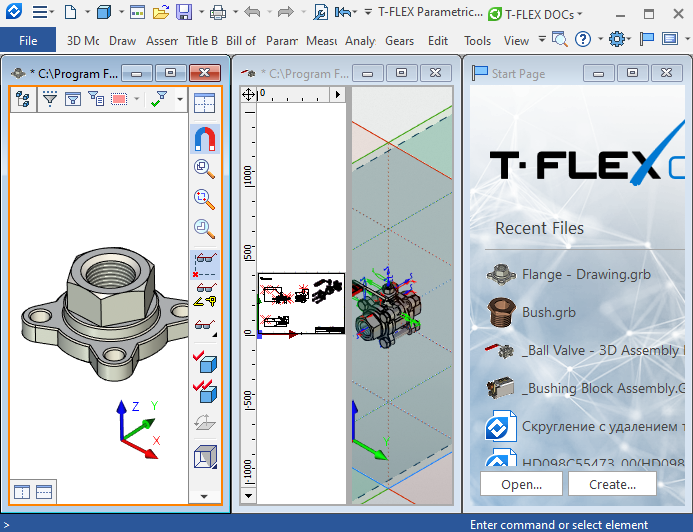
Icon |
Ribbon |
|---|---|
|
View > Window > Cascade |
Keyboard |
Textual Menu |
<WCA> |
Window > Cascade |
The command places open document windows in a cascade (each next window overlaps the previous one without interfering its header).
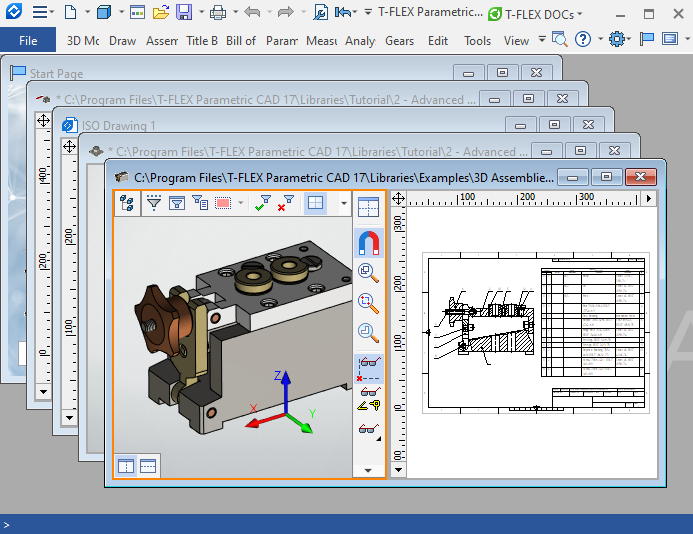
Tile Windows Horizontally, Tile Windows Vertically, and Cascade commands are available even if document tabs are enabled. Using these commands in such case disables document tabs.
When document windows are minimized, you can easily arrange them along bottom border of the working area using the Arrange Icons command:
Icon |
Ribbon |
|---|---|
|
|
Keyboard |
Textual Menu |
|
Window > Arrange Icons |
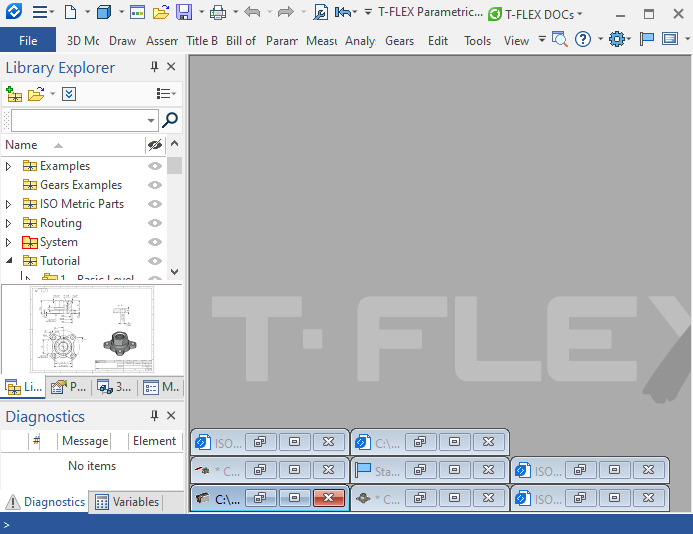
Additional Document Window
You can open several document windows for the same document using the New Document Window command.
Closing Document Windows
Closing a single document window is described in the Document Tabs chapter both for enabled and disabled tabs cases.
Closing all windows of the active document is performed using the Close command.
Closing windows of all documents in the current session at once is performed using the Close All command.
Splitting the Active Document window
Active document window can be slit into several parts. More information can be found in the View Windows chapter.
See Also: